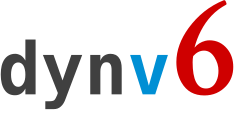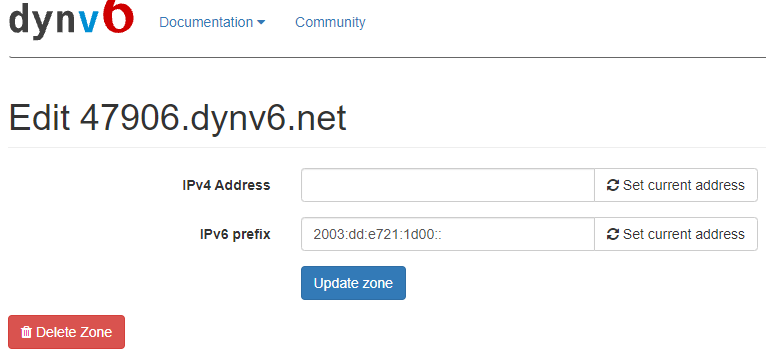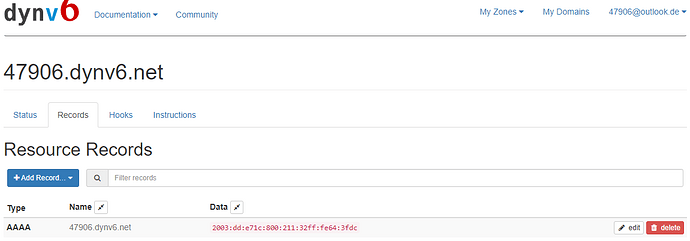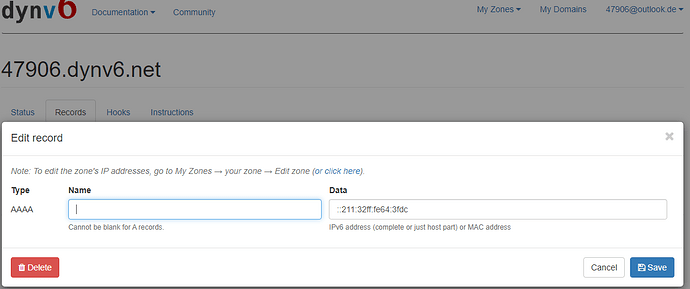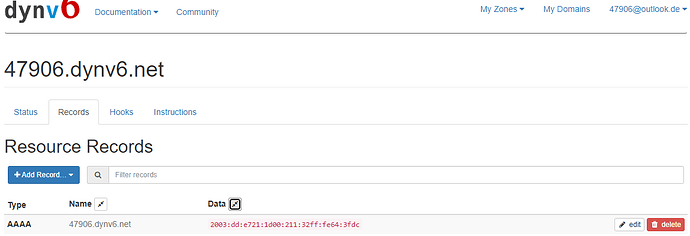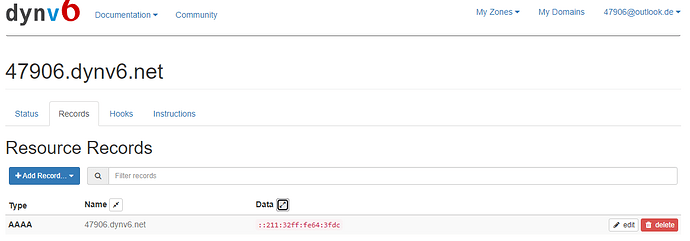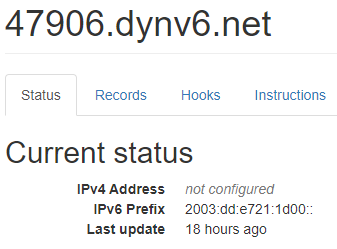Don’t worry 
So now the prefix is set correctly in Dynv6. Just in case you didn’t do it yet: Don’t forget to revert the update string to the version with placeholders (from Sam’s suggestion, or mine, as you like it).
Unfortunately the public IP6 address is still resolved as in your screenshot, i.e. it has not been updated as it is supposed to be.
Please verify on the Records page - there is an edit button, too - what address the Data field contains. I guess it’s the one that is returned on ping. The old prefix is still there and overrides the new one. If you shorten the address to the pure host part ::211:32ff:fe64:3fdc (Edit button) then it should work. In this case the resulting complete IPv6 address (prefix+host part) will change along with the prefix automatically each time the prefix is modified.
I’ve tried it out: Seven languages, whow!
Regarding your question: No, the display language doesn’t affect the correct setting of the variables. If the update URL is set correctly with the right placeholders, the prefix should be updated correctly, too. I believe it was properly set all the time but just not used.
